#prefabricated construction companies
Text
Smart Box Cabin Projects: Showcasing Sustainable Prefab in India
Explore our portfolio of Smart Box Cabin projects, showcasing sustainable prefab constructions in India. Witness innovative designs and green building initiatives for modern living.
#Smart Box Cabin projects India#Prefab construction showcase#Modular homes portfolio#Sustainable building projects#Prefabricated structures India#Eco-friendly housing designs#Innovative prefab constructions#Smart living spaces India#Green building initiatives#Prefab architecture showcase#best modular home manufacturers#best peb companies in india#best prefab companies#best prefab home builders in india#best prefab home companies#build innovative prefab#cheap prefab cabins#build innovative solution#commercial shed construction#industrial shed manufacturers
0 notes
Text
Crafting Excellence: Trusted Steel Building Manufacturer in India

AKMY Buildcon stands out as a premier steel building manufacturer in India, focusing on the creation, production, and distribution of pre-engineered steel buildings. Our expertise lies in constructing a diverse range of PEB buildings, including warehouses, office buildings, cold storage facilities, site offices, prefabricated hospitals, prefab schools, and more.
#steel building manufacturer in india#steel building construction company in india#steel building cost india#steel building solutions in india#prefabricated steel building supplier
0 notes
Text

Explore the realm of warehousing building solutions, including prefabricated warehouse design and the role of PEB warehouse manufacturers. Discover how these innovative approaches are reshaping the warehouse construction landscape. From efficient design concepts to collaboration with warehouse construction companies, gain insights into creating functional and scalable warehousing spaces. Whether it's for manufacturing, storage, or distribution, this overview offers a glimpse into the evolving strategies that optimize space utilization, operational flow, and overall efficiency in modern warehousing projects.
#warehousing-building-solutions#peb-warehouse-manufacturers#prefabricated-warehouse-design#warehouse-construction-companies#manufacturing-warehouse
0 notes
Text
Exploring Prefabricated Houses in India: Types, Companies, and Rates per Sqft
In recent years, the concept of prefabricated houses has gained significant popularity in India. These houses are built off-site and then transported to the desired location for quick and efficient installation. Prefabricated houses offer numerous advantages such as cost-effectiveness, reduced construction time, and flexibility in design. In this blog, we will explore some of the different types…
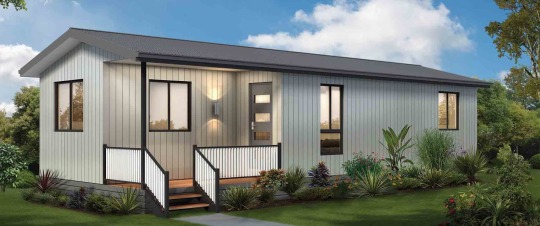
View On WordPress
#Concrete panel homes#Container homes#Cost-effective housing solutions#Design flexibility in prefabricated houses#Modular homes#Panelized homes#Prefab homes#Prefabricated houses in India#Prefabricated housing companies#Quick assembly homes#Rates per sqft#Steel frame homes#Sustainable construction#talkstreetblog#Types of prefabricated houses#Wooden homes
0 notes
Text
Understanding the Imperative Function of Warehouse Buildings and How Can We Improve Their Construction
Warehousing is referred to as the process of storage of goods safely and in a secured organized manner. Across the supply chain industry which is the backbone of distribution for all industrial and commercial sectors, warehousing is a critical component of the process and a key to fulfilment of the supply and demand targets. Apart from safe storage of goods, warehouses help keep a track of the inventory, ensure precision in ordering and also streamline the shipping activities.
Warehouses have been in practice since times immemorial and are prominent for use across all types of businesses. Manufacturers, fresh produce companies, agricultural entities, industrial manufacturers, commercial wholesalers as well as logistics companies all rely on warehouse buildings for maintaining a smooth and precise core operation. Owing to all such imperative applications, it is every bit essential to enable a strong warehouse infrastructure which will prevent any sort of disruptions in the organization’s activities and also result in enhanced productivity and operational streamlining.
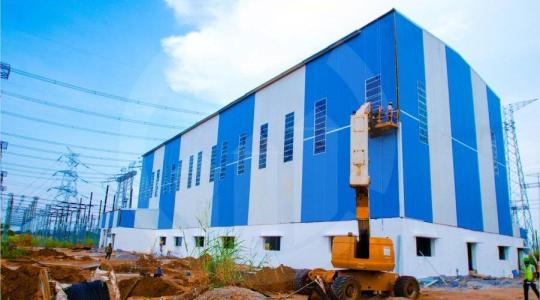
Prominent roles that warehouse buildings fulfil
Warehouse buildings play a crucial role across myriad sectors. Discussed hereunder are their top utilizations and benefits -
Planned storage of goods so as to suffice market demands and availability
Extended storage needs due to rise in demands and changing market trends
Protection of goods and items from damage, theft or loss due to rotting
Warehouses act as in-transit stations in a supply chain sector
Helping keep a track of inventory to analyze or predict consumer behavior
Safe storage to extend product life span and prevent weather damage
Ensure a proper management of resources, inventory and finished products
Enable optimum infrastructure for E-commerce companies as well as packers and movers
Importance of warehouse buildings for businesses
Discussed as under are the top reasons why warehouses are crucial for your business -
- Warehouse infrastructure ensures a centralized storage location which is imperative to reduce the distance between products and markets. Maintaining a warehouse helps a business to save valuable time and money as well.
- Enhanced order processing is an undeniable advantage that warehouses deliver. Ensuring a timely delivery of products to the designated customers is made possible only when the shippers and distributors can identify the exact products from the inventory. This is made possible by warehouse storage.
- Accommodation of expanding business needs and incremented production can best be made possible by warehousing. A warehouse is crucial to safely store surplus.
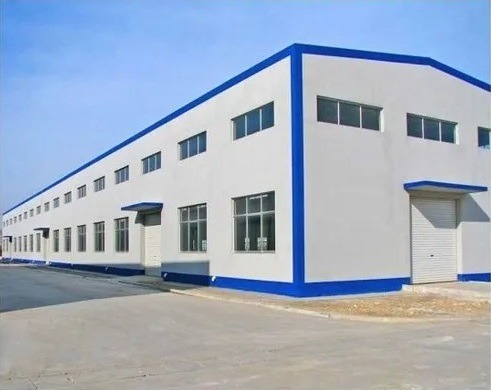
Advantages from prefabricated warehouse manufacture technology
Following traditional construction methodologies for developing warehouse infrastructure for current and future industrial as well as commercial business needs can result in flaws, disruptions, inconsistencies as well as inventory or product damages. Further, the conventional methodologies of warehouse construction are costly and time consuming as well.
EPACK as one of the top warehouse construction companies in India offers prefabricated warehouse manufacture solutions which pose the following advantages -
Design ergonomics
Structural durability
Seismic safety
Swift construction
Layout flexibility
Cost effective
Visit https://www.epack.in/warehouse-godown for more information.
0 notes
Text
Modular Building companies
Manufacturer and supplier of prefabricated modular buildings that can be used for various work purposes. Modular Building Companies include onsite housing with one or more levels, dormitories, offices, sanitary and changing facilities, clinics and hospital areas, workshops, schools, kitchens and restaurant spaces. The general building design is very flexible and can be customized to match clients’ specific needs. Moreover, unlike many other modular building companies, we provide optional supplies of accessories such as chairs, desks, tables, beds and bedding, kitchen equipment, water boilers, storage racks, electricity generators to furnish your workspaces.
Advantages of Module-T over other modular building companies
Among the many modular building companies, there are lots of good reasons to choose Module-T to supply your modular containers. These include fast production, transportation and assembly of high-quality prefab modular containers. However, another asset that distinguishes us from other modular building companies is our exceptionally high level of customer trust. Customers and clients are at the heart of what we do and we want to offer them the best possible prefab building solution that is quick, affordable, excellent-quality and environmentally friendly. Our reputation is also bolstered by our numerous DSR certifications that are available to view on our website.
WC Container hire local technicians to install their newly purchased containers, we can send over our own in-house technicians from Turkey to provide a first-class assembly service for you. They will expertly install all the required electrical and sanitary fittings to ensure they are completely safe and functional, so your modular building solution will be a worthwhile long-term investment.
1 note
·
View note
Text
Good afternoon TUMBLR - April 9th - 2024
''Mr. Plant has owed me a shoe since July 5, 1971."
Aksai, Kazakhstan - July 2000 - December 2001.
Part 3.
TUNGUSH
As often happens in all parts of the world, when an oil field expands, the risk is of incorporating pre-existing villages in the area. A small village inhabited by about a hundred souls, nestled on the banks of a small lake where carp and trout were fished, Tungush was evacuated after the commissioning of the enormous crude oil treatment plant. The inhabitants were provided accommodation in Aksai at Microrayon 10 apartments, and were given a small monetary compensation. Thus they lost forever the place where their ancestors had lived, a place that, despite being lost in the steppe, had something pleasant about it.
During the construction of the Oil Processing Units, some of the inhabitants of Tangush had worked with us. Simple, strong and honest people. On the occasion of their Nowruz celebration, on March 21st, they used to invite us for a barbecue or as they say in those parts ''''shashlick''. They grill chicken, lamb, pork - all accompanied by rivers of beer, and the grand finale is based on local desserts and artisanal vodka.
I have very fond memories of those people, with whom it was difficult to communicate - many of them didn't even speak Russian, only Kazakh - but with whom the spontaneous language created an atmosphere of friendship and sincere camaraderie.
SAMARA

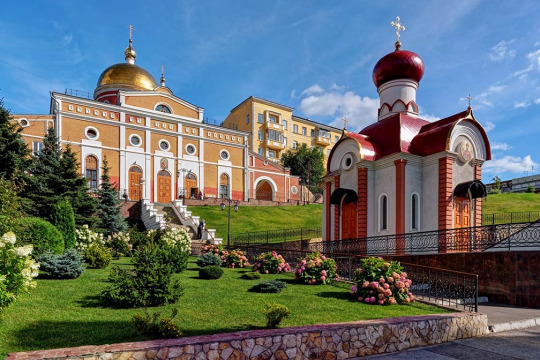
Like many other cities in Russia, Samara has also changed its name over the decades - until 25 January 1990 it was called Kujbyšev, in honor of the Soviet revolutionary Valerian Vladimirovič Kujbyšev. With 1,160,000 inhabitants, Samara is the sixth largest city in Russia.
It is located in the central eastern part of European Russia, known as the Volga Federal District, at the confluence of the Volga River and the Samara River. Despite a past as a closed city, today Samara has become an important city, especially from a social, political, economic, industrial and cultural point of view.
The city is located on the left bank of the Volga river, and is accessed from the eastern part via a long bridge, always crowded with fishermen. Near the bridge, some children offer passers-by large fish, mostly carp and trout.
Our Company was always looking for alternative routes to/from Italy, given that the only direct flight to Uralsk was the AGIP charter, but there were not always seats available. I was therefore chosen as a guinea pig to test the Samara – Frankfurt – Milan flight, operated by Lufhtansa. The problem was the distance of Samara from Aksai: 390 km, which became impossible during winter. I left accompanied by the driver and the Director's personal bodyguard, a former Russian professional boxer. The journey was quite boring, the monotonous landscape of the steppe, the rare traffic and the comfort of the Toyota Land Cruiser made it easy to sleep. We arrived in Samara well in advance, so we went to visit the bazaar.
The city appeared like many others of the Soviet era: the usual microrayons, the usual crumbling prefabricated buildings, the center with the eternal statues of some ''hero'' indicating the ''future ''. The bazaar was crowded (the era of shopping centers had not yet arrived in Russia in 2000) and the stalls selling all sorts of goods – from dried fish to Chinese-made plastic shoes – were all run by huddled women (it was April , but the cold was still biting). Samara was an important city on the ancient Silk Road, which connected China to Europe. Its inhabitants, therefore, are the most varied one can imagine, following the passage of travelers and merchants. Above all, I noticed women with eyes of incredible colors, never seen again anywhere else in the world.
I learned that the airport was quite far from the city, because it served the Samara – Togliattigrad industrial area (the city renamed in honor of the Italian Communist politician, and home to the FIAT factories where the Zhiguli' is still built, a Russian copy of then Fiat 124).
Once at the airport, I greeted my traveling companions and proceeded with the boarding formalities. Once arrived at passport control, here's the ''unexpected'' (can the unexpected be missing from a trip through Great Mother Russia?).
The Russian VISA at the time was printed on a blue card stapled to the passport, and when the border policeman (a tall, thin guy with a mustache like a French actor supporting Louis De Funes in comedy films) checked my VISA , he noticed an inconsistency: instead of reporting my date date of birth – 14.10.1951 – on the card it was written (in pen) 10.14.1951.
When the policeman pointed out that the dates did not coincide with the one on the passport, and I ''kindly'' replied that:
1 – The month ''14'' did not exist
2 – The mistake was made by the Russian clerk at the Embassy in Almaty, who had filled out the VISA.
Daa…kaniashno…the policeman replied, but we have to check anyway, so follow me to the office.
Reluctantly I followed him into his ramshackle office, he made me sit on a wooden chair in front of his desk, where two black rotary telephones ''towered''. And here it must be said that it was Saturday, and that normally the Embassies work until Thursday afternoon. The policeman began a long and exhausting sequence of attempts to call the Russian Embassy in Almaty, with the dial of the phone making that "taratatac" noise when it was released (which I hadn't heard in ages). Every time he finished the sequence of numbers, the policeman held the phone to his ear and after a while he handed it to me, so that I could verify the ''tuu…tuu…tuu'' and that no one answered. Then whle I was giving back the phone, the policeman repeated:
Patom… (after I will try again…)
We went on like this for about 40-45 minutes, the plane's take-off time had passed. At one moment a police officer entered the office, and the policeman jumped to attention. The officer apparently asked what was going on, and the cop showed him my passport and VISA. At which the officer raised his voice, giving peremptory orders to the cop, who snapped back to attention, saying in a loud voice:
YES SIR........SURE SIR!!
And he gave me back my passport, making me understand that we had to hurry, because the plane was late (as if it had been my fault…)
I then got on the plane, greeted by a murmur of impatience from the passengers, all of whom had been sitting waiting for almost an hour for someone .................
RETURN FLIGHT Milan – Frankfurt – Samara.
The return on the same route was characterized by two curious facts. First one happened when I was sitting outside Gate 38 waiting for the flight to be called. Near me I noticed three gigantic Nigerian women: dressed in multicolored traditional costumes, heads bandaged, and dozens of bags and packages on the ground. I wondered how they managed to avoid the surveillance of the security scanners and bring all that merchandise to the boarding gate. The flight to Lagos was called at Gate 39 and all passengers passed the final check before boarding the bus that would take them under the plane. But the Nigerians didn't move. The ground hostess called over the loudspeaker:
Last call for flight LH 357 to Lagos!
All of a sudden the Nigerians sprinted in unison, throwing all the luggage, bags and packages on the other side of the X-ray machine and pressing with their large bodies on the two hostesses who were trying to resist the breakthrough maneuver. In the meantime, many of the bags that landed on the other side of the scanner had opened, revealing their contents: old shoes, clothes, jeans, chains, T shirts etc. Two policemen had come to help the hostesses, but the Nigerians had started screaming in their loud voices:
You can't touch me I am a woman!! Remove your hand from my bodyyyyyyyy!!!
A drama both hilarious and vulgar at the same time, as only Nigerians can do. And who won in the end? Them, the women of course! They passed through check point with all their merchandise and got on the bus. I think the German policemen thought: ''Let the Nigerian policemen handle it…''
But that wasn't the end of it, Frankfurt had the second episode of the day in store for me shortly thereafter. After going through security, I got on the plane to Samara and immediately realized that there were 4 drunk Russians on board. Coincidentally I was sitting in the seat right after them. After repeated attempts by the hostesses to calm down the agitated Russians, the plane Caètain himself intervened. At the Captain's request to stay seated and fasten their seat belts, the Russians responded with laughter, belches and pats on the back, and offered the officer vodka. The Captain returned to the cabin, and shortly thereafter he decided to call the airport police.
Two green and white vans arrived under the plane, from which five policemen got out. Once they got on board and identified the drunk Russians, they wasted no more time: they grabbed three of them, dragged them into the corridor of the plane, they throw the guys from the ladder without letting them almost touch the steps, then bringing them inside the van and going away. A spontaneous applause broke out inside the plane, but the fourth russian had managed to get away with the toubles, remaining hidden between the seats rows. Now he sat down again, fastened his seat belt and remained calm, while the stewardess gave him a last look. Shortly after take-off the Russian, sitting in front of me, turned his head and said in a ''conspiratorial'' way, laughing out loud:
But they haven't seen these!!! (showing me the three bottles of vodka and one of brandy that he had managed to hide under the seats)
Let's drink them together!! He said.
No thanks bro.......it's too early for me, but thanks anyway!
The rest of the trip was fairly uneventful. I arrived in Samara late in the afternoon. My driver Sacha was waiting for me, and together we began the long journey that led to Aksai. In the evening we stopped at a strange ''service station'' along the state road. It wanted to be a bit ''American style'' and had a couple of railway carriages in the vast car park, perhaps as an attraction for the children of passing tourists.
We arrived in Aksai late at night, after having crossed the Russia – Kazakhstan border without any problem.
BRITH HSE GUY
There was a guy, Mr. Alan Robertson, an Englishman in his 50s, tall and stocky, with a mustache - his occupation was HSE Supervisor. I'm write about him to make people understand the substantial difference how people are treated, according to their nationality, in any context of international projects.
First of all, as mentioned several times, these people generally have 28/28 work shifts: that is, 28 days on site, and 28 at home (one of Mr. Zinno's most famous sentence was '' 28/28 rotation is such good working shift that it's not even done in Heaven…).
Than salary wise there's no comparison: any Supervisor, as long as he was British or American, during Karachaganak project earned around 20,000+ USD/month (plus food, accommodation, paid flights, pocket money). While an Italian Supervisor did not earn more than 5-6000 USD/month.
Returning to our Alan, he was married for the second time to a Spanish woman (what the latter found in him will remain a mystery forever). During his "28 days at home" Alan worked in his wife's restaurant on the Costa Brava as waiter.
When he returned to his duty in Aksai Alan used to be very tired. Given his size (and the color of his nose also betrayed his habits) Alan certainly didn't feel like banging himself too much. During meetings he used to fall asleep dramatically, but he had the foresight to always sit next to his friend the Superintendent. - so when the exhausted Alan leaned on his shoulder, his friend would stomp him under the table, suddenly waking him up.
2 notes
·
View notes
Text

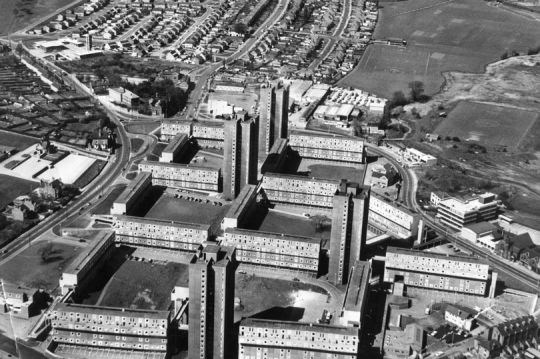
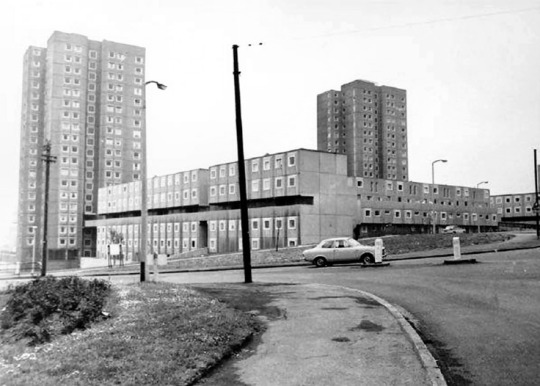
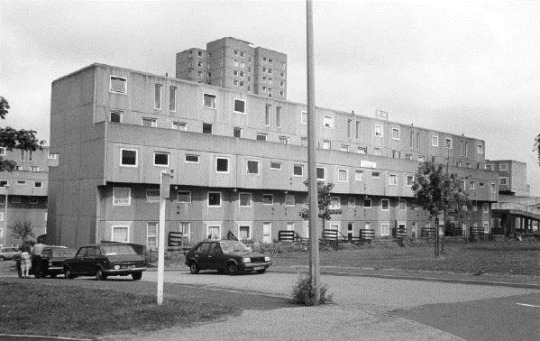




One of the most intriguing estates, was the exceptionally complicated "Old Basford" estate in the North of Nottingham, sometimes known as the Basford Flats, the Basford Flats Complex, Old Basford Estate or the Davids Lane Estate (one of the main boundary roads of the development). It occupied an area previously occupied by a mixture of old tenements, industrial plots and scattered historical infill terraces, which had been cleared in stages in the 1950's and 60's, leading up to the new estate, approved in 1967. It is also one of the rare panel estates to actually display a 'Brutalist' aesthetic; the unsophisticated, aroused by the word 'brutal', like to throw it around for everything and anything they find 'oppressive', in this case, such a raw aesthetic was intentionally aspired to.
The technical details for the prefabricated elements were delivered with the aid of Concrete Ltd's 'Bison' panel system, itself a modified derivative of an imported early version of the Danish Larsen-Nielsen system (which would also be directly imported by Woodrow-Anglian), but the construction contractor of the estate was a company called Drury--it also worked on the Gibson Street and Beswick-Bradford estate groups in Manchester (colloquially known as 'Fort Beswick' and 'Fort Ardwick'). It seems they little experience with such construction, for all the estates suffered from issues of varying severity.
Basford consisted of 17 lower maisonette-flat blocks between 5 and 7 storeys in height, straddling the steeply sloped site down towards the railway to the east. It also included four point blocks, ranging between 18 and 20 storeys (due to the terrain; they were roughly at the same height at roof level). The interesting and rather unusual component was that the access decks were linked not only between the maisonette blocks, but also the point blocks; pedestrian and cycle path bridges with inclined slopes used the terrain to access the upper levels without steps.
2 notes
·
View notes
Photo
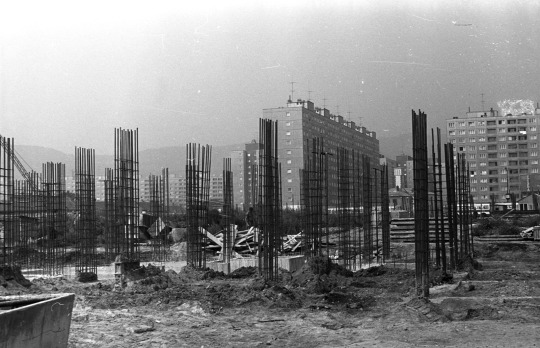
Construction of a prefabricated house on Miklós Street, Budapest, 1978. From the Budapest Municipal Photography Company archive.
134 notes
·
View notes
Text
Modern Marvels: Advancements in Pre-Fabricated Housing Technologies
In the dynamic landscape of construction and architecture, SmartBox Cabin stands at the forefront of innovation, spearheading advancements in pre-fabricated housing technologies. This blog explores the remarkable evolution of prefab homes, shedding light on the best modular home manufacturers, PEB companies in India, and the cutting-edge solutions offered by SmartBox Cabin, your go-to destination for modern, sustainable living.
The Prefab Revolution: A Glimpse into the Future
Prefab homes have transitioned from mere structures to architectural marvels, and SmartBox Cabin is leading the way. Our commitment to revolutionize modern living spaces is evident in the innovative solutions we offer, encapsulating the essence of contemporary design, sustainability, and efficiency.
Best Modular Home Manufacturers: SmartBox Cabin Shines
When it comes to modular homes, SmartBox Cabin stands out among the best. Our homes are a testament to meticulous craftsmanship, thoughtful design, and a commitment to quality. As one of the best modular home manufacturers, we prioritize customization, ensuring that each dwelling is a unique reflection of the homeowner's vision.
Best PEB Companies in India: SmartBox Cabin's Prowess
In the realm of Pre-Engineered Buildings (PEB), SmartBox Cabin has earned its place among the best PEB companies in India. Our expertise extends beyond residential spaces, making us a reliable partner for commercial shed construction and industrial shed manufacturing. With a focus on innovation and efficiency, we deliver PEB solutions that redefine the standards of structural engineering.
Best Prefab Home Builders in India: Crafting Dreams
SmartBox Cabin takes pride in being counted among the best prefab home builders in India. Our commitment goes beyond constructing houses; we build dreams. Our homes combine aesthetic appeal with sustainable practices, creating spaces that resonate with the aspirations of modern homeowners.

Build Innovative Prefab: SmartBox Cabin's Approach
At SmartBox Cabin, we don't just build prefab homes; we build innovative solutions. Our approach integrates cutting-edge technologies, eco-friendly materials, and a commitment to energy efficiency. Each SmartBox Cabin is a testament to our dedication to providing homes that are not only stylish and functional but also environmentally conscious.
Affordable Luxury: SmartBox Cabin's Cheap Prefab Cabins
Luxury doesn't have to come at a steep price, and SmartBox Cabin proves this with our range of cheap prefab cabins. These compact marvels redefine affordable living, offering a blend of comfort, style, and modern amenities. Smart living has never been more accessible.
Commercial and Industrial Solutions: SmartBox Cabin's Expertise
SmartBox Cabin extends its expertise beyond residential spaces, providing top-notch solutions for commercial shed construction and industrial shed manufacturing. Our structures are designed for efficiency, durability, and adaptability, making us the preferred choice for businesses across diverse sectors.
SmartBox Cabin's Commitment to Sustainability
Sustainability is at the core of SmartBox Cabin's philosophy. Our prefab homes are designed to minimize environmental impact, incorporating eco-friendly materials and energy-efficient solutions. As a responsible player in the construction industry, we aim to set new standards for sustainable living.
SmartBox Cabin: Redefining Modern Living
In conclusion, SmartBox Cabin stands as a beacon of innovation in the realm of pre-fabricated housing technologies. As one of the best modular home manufacturers and prefab home builders in India, we are committed to crafting living spaces that embrace the future. Explore the possibilities with SmartBox Cabin – where innovation meets sustainable living.
Visit our website here to discover the SmartBox Cabin difference and embark on a journey towards modern, efficient, and sustainable living.
#best modular home manufacturers#best peb companies in india#best prefab companies#best prefab home builders in india#best prefab home companies#Build innovative prefab#Build innovative Solution#cheap prefab cabins#commercial shed construction#industrial shed manufacturers#prefabrication
0 notes
Text
Initial tips before buying your prefabricated house
If your intention is to make a good prospecting on the Internet to find the company that makes the cheapest prefabricated steel Quonset hut home, here are a few tips so you can compare prices on equal terms.
The System
The first decisive element when it comes to establishing the price is the construction system of your prefabricated house. Normally from cheapest to most expensive the systems are ordered as follows:
1º WOOD structure
2º STEEL structure
3º CONCRETE structure
Ready-made models
It is common to find prices of already designed models. These are designs with studied forms that minimize the cost. Normally they are very square or rectangular so that the repercussion of the price of the facade does not shoot up the price. They include a whole series of qualities of finishes and standard equipment, and, in some cases, even have 2 or 3 of different level.
Typically, in the price of the models is not included:
The foundation, and the excavation necessary to make it.
The connection to the sewage, electricity and municipal water networks.
Transportation (if modular)
Per diem for the workers for the work on the site
All these items vary for each plot and depend on the shape and location.
Apart from ready-made models, you will also find companies that offer customized designs with a price €/m2. In order to compare prices, you must take into account what is included and what is not included.
The following is an overview of the points that a prefabricated house should have in order to be ready to move in.
Structure
Facades
Roof
Partition walls
Carpentries (exterior windows, interior doors and entrance door)
2 notes
·
View notes
Text
ENGKO: Revolutionizing Manufacturing with High-Quality PUF Panels in India
In the dynamic landscape of construction, innovation and efficiency are paramount. ENGKO, a pioneering name in the industry, stands out as a leading manufacturer of Polyurethane Foam (PUF) panels in India. With a commitment to quality, sustainability, and cutting-edge technology, ENGKO has emerged as a game-changer in prefab construction.
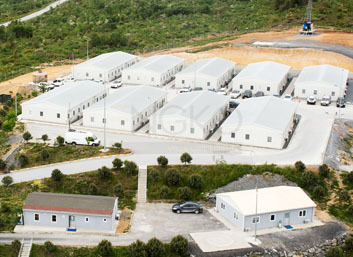
The Power of PUF Panels
Polyurethane Foam (PUF) panels are at the core of ENGKO Engineering Company offerings, and for good reason. These panels are renowned for their outstanding thermal insulation properties, durability, and versatility. As a leading manufacturer, ENGKO ensures that its PUF panels adhere to the highest industry standards, providing an optimal solution for diverse construction needs.
Energy Efficiency and Sustainability
One of the key advantages of ENGKO PUF panels is their exceptional energy efficiency. These panels act as a formidable barrier against heat transfer, significantly reducing the need for artificial heating or cooling within a structure. This not only contributes to lower energy consumption but also aligns with global sustainability goals. ENGKO is committed to eco-friendly practices, and their PUF panels play a crucial role in creating energy-efficient and environmentally conscious buildings.
Customization for Varied Applications
ENGKO understands that each construction project is unique, with distinct requirements and challenges. The company offers a range of PUF panels that can be customized to suit specific applications. Whether it's for industrial buildings, cold storage, clean rooms, or residential structures, ENGKO PUF panels are designed to meet the diverse needs of the construction industry.
Rapid and Cost-effective Construction
Prefabricated construction, powered by PUF panels, is synonymous with speed and cost-effectiveness. EPACK Engineering Company's panels are manufactured precisely and efficiently, allowing for faster construction timelines. This not only reduces overall project costs but also minimizes the environmental impact associated with traditional construction methods.
Quality Assurance and Certifications
ENGKO places a premium on quality assurance. The company adheres to stringent quality control measures at every stage of production, ensuring that each PUF panel meets the highest durability and performance standards. Additionally, the panels are backed by relevant certifications, providing clients with the assurance that they are investing in a reliable and compliant construction solution.
Contact Detail
ENGKO Engineering Company
Add- DB Plaza, RDC, Near Yes Bank, Ghaziabad INDIA
Phone no- 9319777949
Email: [email protected]
Website- https://www.engko.co.in
3 notes
·
View notes
Text
Evolving Warehousing Building Solutions - Everest Industries
Explore the realm of warehousing building solutions, including prefabricated warehouse design and the role of PEB warehouse manufacturers. Discover how these innovative approaches are reshaping the warehouse construction landscape. From efficient design concepts to collaboration with warehouse construction companies, gain insights into creating functional and scalable warehousing spaces. Whether it's for manufacturing, storage, or distribution, this overview offers a glimpse into the evolving strategies that optimize space utilization, operational flow, and overall efficiency in modern warehousing projects.
#warehousing-building-solutions#peb-warehouse-manufacturers#prefabricated-warehouse-design#warehouse-construction-companies#manufacturing-warehouse
0 notes
Photo
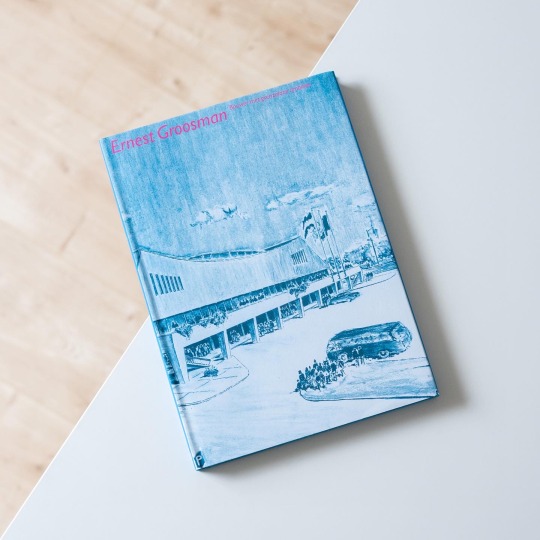
Ernest Groosman (1917-99) was part of a generation of architects that was faced with one of the major postwar problems: the scarcity of housing space and the necessity of accomodating the demand at rapid pace. Consequently Groosman for a large part of his career dealt with housing, construction systems and standardization. Having graduated both the intermediate technical school (MTS) in Utrecht and the school of higher vocational education (HBO) in Amsterdam with a degree in architecture Groosman was well-versed in hands-on building and designing. During his entire career, i.e. from the setting up of his own office in Rotterdam in 1948 until his retirement in 1981, he was never at a loss for commissions: gaining early fame with the Parkflat apartment building in Rotterdam there was a continuous stream of projects in housing, supplemented by his recurrent collaboration with prefabrication companies. As a sideline of the latter he also got involved with the design of supermarkets, a new retail concept hailing from the US. The new concept was rolled out by the Albert Heijn chain that commissioned Groosman to design a standard supermarket; the first store was opened in 1963 and Groosman continued to develop bigger and cheaper versions of the standardized supermarket as well as he built the company’s HQ. In addition he also ventured out into the up-and-coming field of shopping centers, a good example of how Groosman identified opportunities and capitalized on them.
Appropriately the most comprehensive monograph on the architect to date is in its title also hints at the ambition of the architect: „Ernest Groosman - Bouwer met grenzeloze ambities“, published in 2001 by Uitgeverij 010, in five chapters and catalogue of selected works shows that Groosman was ambitious both as an architect and an individual. From an early age on he had learned to love foreign countries and cultures and became a widely travelled man who kept in touch with global developments, both professional and cultural.
Although his work isn’t loved by everybody the present volume nonetheless is a worthwhile read on an architect who shaped postwar architecture in the Netherlands.
25 notes
·
View notes
